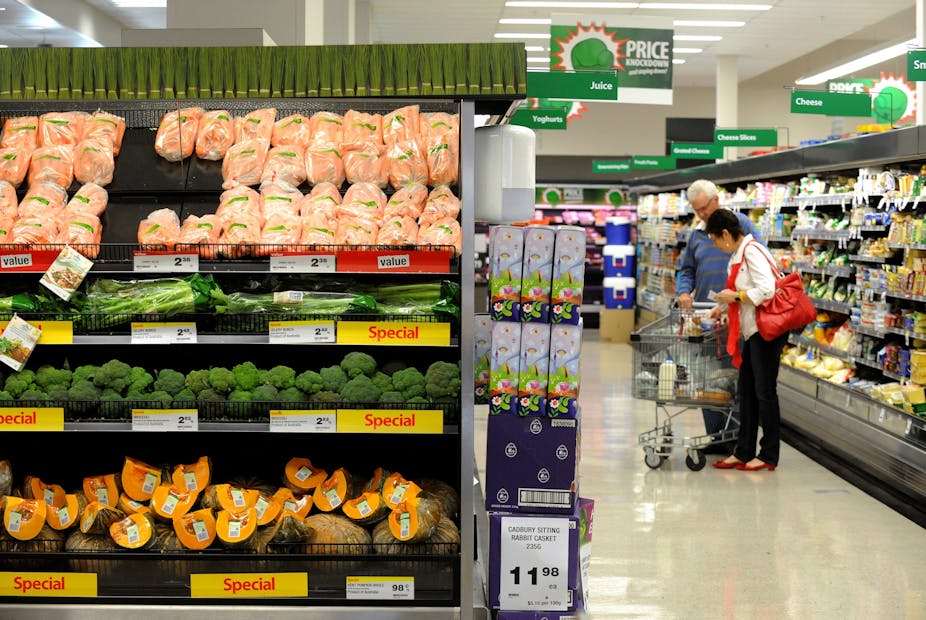When a major retailer uses its countervailing power (or “market muscle”) to negotiate better terms from suppliers, should policy makers be concerned?
In Australia, the debate has focused on dairy farmers in the case of milk and the multinational manufacturers for other products. But to an economist this focus is misplaced. Basic economics tells us that if retailers sell more of an agricultural product (like milk) then farmers will be better off. And it is difficult to see why Australian consumers should be concerned about lower profits for multinational manufacturers like Nestle.
In contrast, the debate in Europe and the UK, has focused on the potential damage to other retailers and their customers. Can the discounts negotiated by Woolworths, Bunnings or other large retailers rebound on smaller retailers who lack bargaining power? Will suppliers try to ‘recover’ the profit that they lose when they are forced to reduce prices to large retailers by raising prices to smaller competitors, such as independent hardware retailers and convenience stores? This situation - where lower wholesale prices to large retailers with countervailing power lead to higher wholesale prices for other retailers - is called “the waterbed effect”.
The standard logic behind the waterbed effect is clearly wrong. It makes no sense for a manufacturer to try and recover a discount that it gives one retailer by naively raising prices to other smaller retailers. Such an approach will simply bankrupt the small retailers and make the manufacturer even more reliant on the big retailers.
A waterbed effect, however, can occur. Recent research, both in Europe and Australia, highlights the key characteristics of the manufacturing-retailing chain that can lead to a waterbed effect.
First, a waterbed effect is more likely if upstream suppliers are capacity constrained. If such a supplier sells more of its product to a powerful retailer, there will be less for all other retailers. This will give the supplier a strong incentive to raise the price to those other retailers. However, this doesn’t depend on the retailers being competitors. So a big retailer in one market that uses its countervailing power may cause supply prices to rise for retailers in different markets.
Second, a waterbed effect may arise if customers are mobile and easily shift between retailers. If the large retailer passes on some of its discounted supply price to its customers, then it will increase its retail market share. The smaller retailers will lose market share, undermining their ability to negotiate with suppliers. The more customers are attracted by the big retailer’s lower prices, the more the bargaining power of smaller retailers is eroded.
Third, however, competition can also act against any waterbed effect. As noted above, if the big retailer and smaller retailers are close competitors, any discount to the big retailer weakens the smaller retailers. The supplier will have an incentive to lower the price to these small retailers, both to maximize its own profits and to avoid becoming too reliant on the large retailer.
Finally, changes in input prices can change retail strategy. Faced with a large competitor who buys cheaply at wholesale and discounts at retail, a small retailer may need to rethink its strategy. It may reposition to a market niche, for example, just focusing on convenience customers. Alternatively, it may seek to merge with some of its small competitors to increase their combined market muscle. These strategic changes will feed back into wholesale prices. However, whether wholesale prices rise or fall for the smaller retailers will depend on which strategy they adopt.
So should policy makers be worried about a waterbed effect? If a large retailer negotiates lower wholesale prices and this results in higher supply prices to smaller retailers, then the small retailers and their loyal customers will be worse off. But policy makers need to look carefully at the relevant industry to see whether or not a waterbed effect is likely. For example, if the relevant manufacturers have excess capacity then a waterbed effect is less likely. If retailers are in close competition and any wholesale price rise would bankrupt small retailers, then suppliers would be foolish to raise prices to those retailers.
Policy makers must be careful not to over-react to anti-competitive complaints from smaller retailers. If there is no waterbed effect then customers win when a large retailer flexes its countervailing power with suppliers. Retail prices will tend to fall. This makes life harder for small retailers but benefits the customers.
Suppliers, such as dairy processors and food importers, will complain when a large retailer negotiates a lower supply price. This reduces suppliers’ profits. But policy makers must be careful not to respond too quickly to these complaints. In the absence of a waterbed effect, any political intervention is likely to undermine competition and harm consumers.

